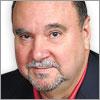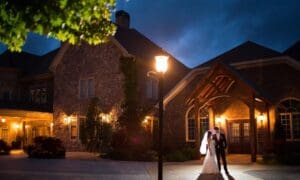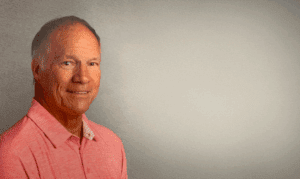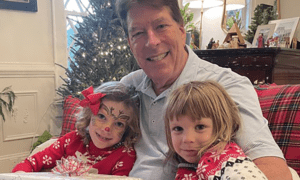Last week Timothy Parker wrote that we do not spend sufficient time honoring our parents and grandparents for their sacrifice in WWII when they saved the world. I couldn’t agree more.
Maybe Mr. Parker, who wrote of his father’s WWII service, won’t mind my piggybacking to write about my father, also a Navy man.
Dad was a Navy corpsman on an aircraft carrier in the Pacific. That’s all I knew growing up because Dad was a simple man, not a blabbermouth like me, and he didn’t talk about it.
Furthermore, when I left the Army in early 1972, the Vietnam War was winding down and I put it all behind me to get on with life. For over 30 years I never attended a single veteran event.
John Synowsky, one of the two young men who risked their neck to rescue me when I was shot down and badly hurt, called several times over the years asking me to go with him to a reunion, but I always said no, that part of my life was over and I didn’t want to relive it.
So I understood my Dad not talking about his war experience and I made the mistake of not asking too much about it.
One day in 1995 at my parent’s home I started asking Dad some questions. Mom’s eyes lit up as she told me she came across something I might like to see. She retrieved a tube with a document rolled up; she said it was an image of Dad’s ship, the USS Fanshaw Bay.
The document was dry and cracking and crumbling so that I couldn’t even flatten it out to look at it. I ended up taking it to a document restoration service in Atlanta where they applied moisture over time and flattened it out.
Meanwhile, I learned other things about Dad’s experience.
The USS Fanshaw Bay was a “baby carrier” that carried only 28 airplanes. When McArthur returned to retake the Philippines, the armada was over 700 ships including many troop carriers. Admiral Halsey directed security for all these ships with his main force of big aircraft carriers and battleships, plus a number of security task forces stationed around the perimeter of the armada, because the Japanese fleet had the biggest, meanest group of battleships in the world. One of those task forces was code named 77.4.3, also Taffy Three, including my Dad’s ship, a couple of other small carriers, destroyers, etc.
As the armada approached the Philippines, the Japanese lured Halsey with a decoy of old, empty aircraft carriers to the north. Halsey took the bait and ordered his big aircraft carriers and battleships to give chase in hopes of destroying the Japanese fleet.
While Halsey and his security force were 300 miles away, at dawn on Oct. 25, 1944, the Japanese fleet’s huge battleships sailed east into the sun, through the San Bernardino Strait from behind the islands where they had been hiding, to jump McArthur’s armada. The only thing that stood between them was tiny Taffy Three.
It was truly a David vs. Goliath situation and the fighting was fierce, including, for the first time, Japanese kamikaze suicide bombers striking ships. The Taffy Three carrier USS St. Lo was the first U.S. ship ever sunk by a kamikaze. This was the beginning of the Battle of Leyte Gulf, the largest naval battle ever fought on the seas.
Maybe it was the sun in their eyes, maybe it was the raging resistance, but the Japanese confused little Taffy Three for Halsey’s main battle force, and they withdrew.
I don’t know if Dad did anything notable that day, but the entire Taffy Three task force did receive the highest honor a unit can earn, a presidential citation. I’d like you to read the text of the citation, and think not just about my Dad, but all of them who served and put their life on the line to keep our freedom.
“For extraordinary heroism in action against powerful units of the Japanese Fleet during the Battle off Samar, Philippines, October 25, 1944. Silhouetted against the dawn as the Central Japanese Force steamed through San Bernardino Straight toward Leyte Gulf, Task Unit 77.4.3 was suddenly taken under attack by hostile cruisers on its port hand, destroyers on the starboard and battleships from the rear.
“Quickly laying down a heavy smoke screen, the gallant ships of the Task Unit waged battle fiercely against the superior speed and firepower of the advancing enemy, swiftly launching and rearming aircraft and violently zigzagging in protection of vessels stricken by hostile armor-piercing shells, anti-personnel projectiles and suicide bombers.
“With one carrier of the group sunk, others badly damaged and squadron aircraft courageously coordinating in the attacks by making dry runs over the enemy Fleet as the Japanese relentlessly closed in for the kill, two of the Unit’s valiant destroyers and one destroyer escort charged the battleships point-blank and, expending their last torpedoes in desperate defense of the entire group, went down under the enemy’s heavy shells as a climax to two and one half hours of sustained and furious combat.
“The courageous determination and the superb teamwork of the officers and men who fought the embarked planes and who manned the ships of Task Force 77.4.3 were instrumental in effecting the retirement of a hostile force threatening our Leyte invasion operations and were in keeping with the highest traditions of the United States Naval Service.”
I long ago observed about the Vietnam War that the anti-war crowd kept the country so diverted that America never realized they should have been proud of us, that the things we did under fire would steal their breath, if they only knew. And for far too long, I was too busy to know the same things about my own dad.
When the document restoration was done, I gathered also a photo of my dad in uniform, and a copy of the presidential citation, and had them all nicely framed together. Dad didn’t say much when I hung it on the wall of his TV room, but he had heart attacks and strokes and couldn’t talk easily anyway.
But I knew from Mom that when anyone would visit, Dad would burst with pride when they noticed and asked questions about his ship, and he would explain the stickers were for how many enemy planes they shot down, and so on.
When the Fanshaw Bay crew held a reunion in my Dad’s town of Pensacola, Fla., he wanted to go but needed my mom’s help since he couldn’t drive and used a walker. Mom said it wouldn’t be a good idea, because Dad’s strokes made his emotions uncontrollable, and she knew he would cry and maybe be embarrassed. She just had no idea how much it meant to him, and if only they had called I would have driven down from Peachtree City to take him myself.
When Dad passed away a year later, his prized frame stood on an easel beside his coffin at the viewing, and at the church service, where the pastor read the presidential citation as I asked him to do because Dad was so proud of being part of that historic fight. But there is a second reason, the same reason I am telling you this story.
It isn’t so much about my dad, and it isn’t only about the WWII vets who are aging and dying. As Mr. Parker alluded last week, it is about remembering. It is about reminding our young people the safety and comfort we enjoy comes at a high cost that someone else paid for us, whether that cost was in WWII, Korea, Vietnam, Iraq or now in Afghanistan.
In 2000 I wrote my first newspaper column, published in the AJC, about Dad and those like him. I wish I had done that when he was alive. That same year I attended my first veteran meeting and learned how wrong I had been to ignore that part of my life. I am blessed with new vet friends who are now my brothers for life because of our shared experience, some right here in Peachtree City.
The frame of Dad’s ship and the presidential citation to the task force now hangs in my office. I have told my children, and will need to tell them again, that when I die that frame will pass to them, a family heirloom, one small reminder that we can never, ever forget.
[Terry Garlock lives in Peachtree City and writes columns occasionally for The Citizen. His email is [email protected].]












Leave a Comment
You must be logged in to post a comment.